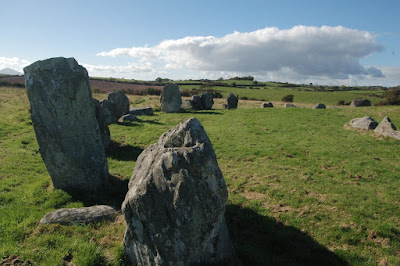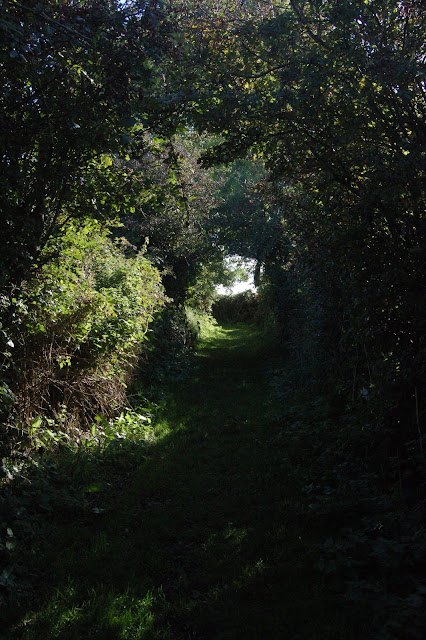 |
| Ballynoe Stone Circle |
These ancient stone circles are strewn all about the Ireland and the British Isles along with other formations such as standing stones, dolmens, & cairns. The purpose of these relics are still mostly a mystery. Theories range from scared burials and religious/social gathering places to celestial observatories (many are aligned with celestial bodies or events). Today, they serve to keep the people connected to the earth and to history, their ancestors. And many folk still feel a connection, often leaving an offering of cloth or trinket on a revered tree as one might light a candle in a place of worship.
We've visited several stone circles in Ireland, England, and Scotland over the years. While some stone monuments have remained as towns and roads built up around them, the ones we have visited have been rural and secluded. It is in this setting that one feels utterly removed from time. The trappings of the modern world fade easily away. If you drive there, you'll leave your car behind and must journey further on foot to arrive on a hill or a plain where the stones still lie after all these centuries. And usually there is a wind, a wind that erases and sound of modernity, a wind that howls from another era.
At Ballynoe Stone Circle, below, you enter via a dense tunnel of thicket and briar, hedges hung with plump, ripe blackberries and a few wind chimes. You walk from modern road to ancient stones within this transporting tunnel.
Ballynoe has over 50 stones and is believed to date back to around 3000 BCE. The circle is over 33 meters wide and cremated remains have been found here. Beaghmore site has seven circles, ten alignments, and 12 cairns. It was discovered as farmers cut peat in the 1940s and dates to the Bronze Age, 2500-500 BCE.
 |
| Hedge Tunnel to Ballynoe Stone Circle, County Down |
 |
| Tree hung with offerings at Ballynoe |
 |
| Ballynoe Stone Circle |
 |
| Beaghmore Stone Cirlces |












Comments